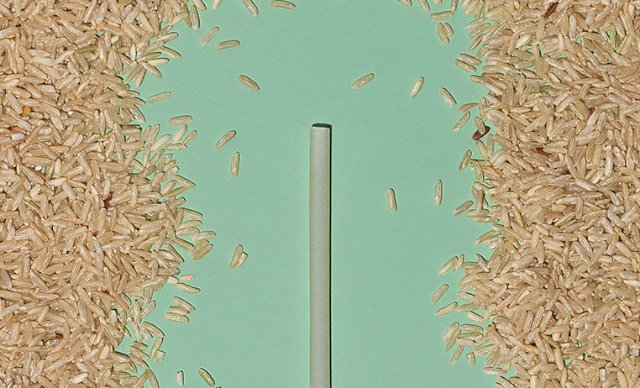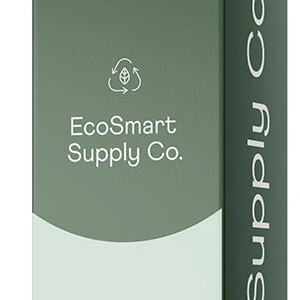Not much news lately from the major Fast Food chains or the big single-use plastic utensil makers on any significant progress in their quest to find an all-round acceptable substitute for the plastic drinking straw. But there are indications that work is continuing in the back rooms…

I remember a time when all drinking straws were made of paper. Really. I’m not pulling your leg. Then, in the 1960s, plastic came in and revolutionized the restaurant industry. And the ‘civilized world’ went on happily using plastic for decades, until someone noticed that the oceans and landfills were filling up with plastic straws, eating utensils, cup lids and lots of other stuff that had previously either been made of paper, or not needed at all. Okay. I won’t dispute that cup lids are a great idea. But I don’t want to get sidetracked on stuff like that today.
Unimaginable amounts of eternal garbage
Single-use plastic foodservice items have become the greatest contributor to plastic pollution worldwide. It’s a huge problem, by any standards.
“You may not know that it takes a plastic straw up to 400 years to decompose,” says Ben Bright, founder of EcoSmart Supply. “In fact, more than 8 million tons of plastic enters the ocean every single year, with the U.S. alone using 500 million plastic straws. This is alarming to say the least. That being said, consumers don’t have to make big changes to make a dramatic impact.”
Four hundred years may not be anything like ‘eternal’ in absolute terms, but for humans like us who can hope to live for no more than about 80 or 90 years, it might as well be.
We’ll get back to Ben and EcoSmart in a moment. But first, a survey of proposed replacements for plastic straws to date…
Lots of suggestions
Folks have come up with lots of suggestions for ethical, sustainable successors to the plastic straw. Materials tried include new plastics that decompose quickly, plant-based materials that not only decompose quickly but are edible. Totally natural solutions such as bamboo straws and straws made from the hollow stems of other plants are single-use, but totally compostable and decomposable.
Some of the better bets are made from metal and other materials which can be re-used ad infinitum. Users are supposed to buy one that they take with them everywhere, and pull out whenever they want to partake of a beverage. This harkens back to the middle ages, when forks were virtually unknown in Europe, spoons were used by only by cooks and poor people, and the smart set all brought their own personal daggers which they used, in concert with their fingers, to hack out morsels of food served on slabs of wood. Then, Italian socialite Catherine de Medici married French King Henry II and vaulted European cuisine and eating conventions into the 16th century.
Some reservations
I have some reservations about many of the materials touted to replace the plastic straw. First, I wonder about the cost of promising new materials. Will the fast Food operators have to raise prices for their grab-and-go beverages to cover the cost? How will customers feel about that?
True, the stainless steel straw, provided by diners and re-used perpetually, costs many times the price of the alternatives, but it’s a one-time purchase, and users have the comfort of knowing they cleaned and disinfected the thing to their standards after the last use. On the other hand, will users bother to clean their personal straws properly? Or will they treat them with the casual disrespect dish towels get? Recent studies show that most folks don’t throw dish towels in the wash until they become visibly dirty, or even crusty. Ick!
I’ve seen reports that real-world tests of some straws made of plant-based materials have found some don’t even last to the bottom of the cup before starting to break down. And others have imparted off-flavours to beverages they’ve been used with.
Bamboo and other hollow-stemmed plants? Too labour-intensive, I predict, to be viable candidates for large-scale replacement of plastic. They’ll probably remain in use where the researchers found them, in the hinterlands of cultures where they’ve been making their own straws as needed from local plants.
Episode IV: A New Hope
(Star Wars fans will rise up and scream that I’ve appropriated one of their sacred icons. But I’m a Star Wars fan, too, and I intended the subhead above as a term of endearment. So pipe down.)
Remember Ben Bright, and EcoSmart Supply? Ben and his company have launched something new in non-plastic drinking straws: a durable straw made from rice flour and tapioca starch that seems to tick all the boxes:
- 100% Natural, organic, and biodegradable
- Longer lasting than any eco-friendly alternative on the market
- No artificial flavors or added preservatives
- No foreign taste before or during use
They’re available now, in packs of 50, 100, 150, or 1,000, via the company’s website. The price for 50 is $0.24 per straw. But the bulk discount if you buy 1,000 works out to under $o.13. A competitive 8 in. / 20 cm paper straw in a bulk pack of 1,000 comes in at just $0.10.
My take
I think Ben and Eco-Smart are on the right track. Their product is made of relatively cheap materials, and will probably be approved by most users. Heck, it’s even vegetarian! Obviously, the Rice Straw can be made in any colour end-users want, and in any size from 5.5 in. / 14 cm ‘cocktail’ to 10 in. / 25 cm ‘milkshake’.
Can EcoSmart’s new material be used for other disposable foodservice items? Utensils? Stir sticks? Cup lids? Is the stuff stable when used with hot beverages, or is it only usable with cold drinks? Many questions remain to be answered before anyone is willing to recommend the product for wide-range implementation.
Still, I think the EcoSmart Rice Straw will be embraced by many users who are motivated as much, or more, by their desire to promote sustainability and ethical consumerism, than they are by optimizing profits. And, as production ramps up, the price should fall.
~ Maggie J.

